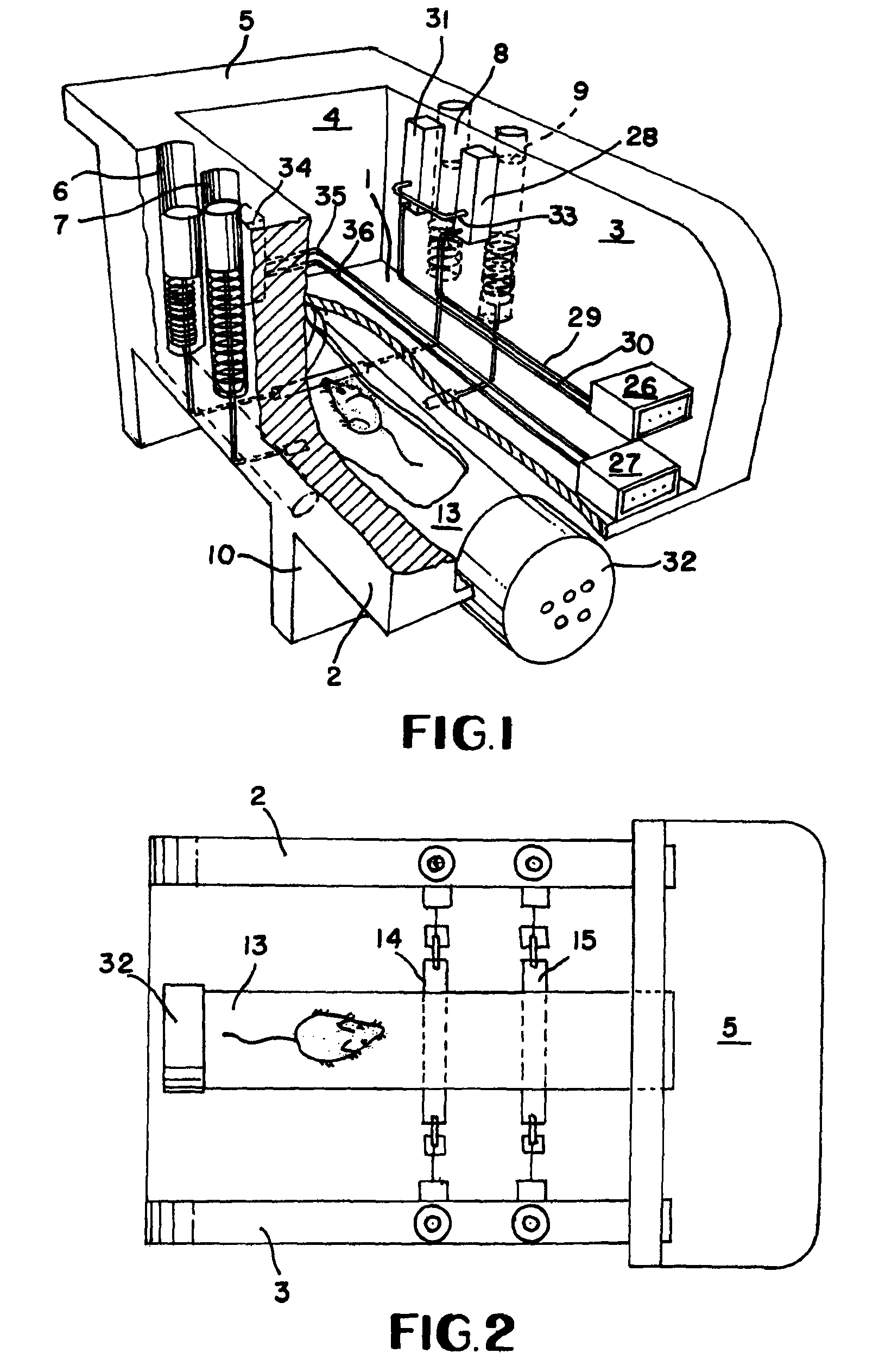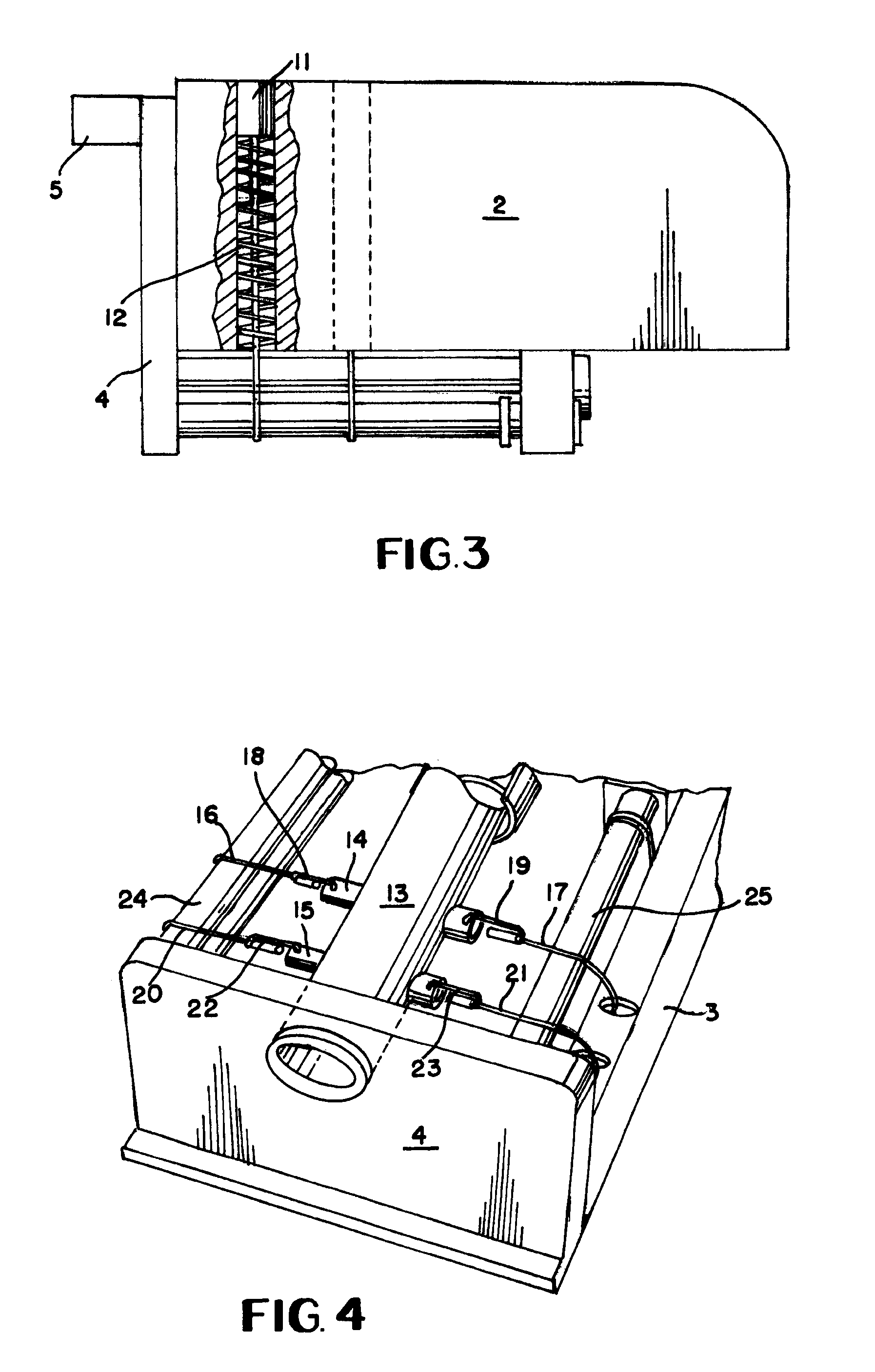Oral function and dysfunction quantification method
a function and function technology, applied in the field of oral function and dysfunction quantification, can solve the problems of affecting causing a false negative, and a drastic influence on the effect of withdrawal threshold, so as to increase the withdrawal threshold, restore the function of the oral cavity, and improve the effect of gnawing function
- Summary
- Abstract
- Description
- Claims
- Application Information
AI Technical Summary
Benefits of technology
Problems solved by technology
Method used
Image
Examples
Embodiment Construction
[0015]In the drawings and with particular reference to FIG. 1, the oral function and dysfunction quantification device is shown and includes bottom wall 1 with spaced side walls 2 and 3 extending upwardly from the side edges thereof. Rear wall 4 is secured to the end edges of bottom wall 1 and side walls 2 and 3 with shelf 5 extending outwardly therefrom. Cylinders 6 and 7 are disposed within side wall 2 and, in similar fashion, cylinders 8 and 9 are disposed within side wall 3. Also, stabilizing leg 10 is secured to the underside of bottom wall 1.
[0016]Contained within each cylinder 6-9 is a piston arrangement and, since the structure is the same for each cylinder, only one is shown in detail in FIG. 3. More specifically, a piston 11 is disposed within each cylinder 6-9 with compression spring 12 disposed below piston 11 such that piston 11 is biased upwardly, as viewed in FIG. 3.
[0017]According to this invention, confinement tube 13 extends longitudinally through the device. Space...
PUM
 Login to View More
Login to View More Abstract
Description
Claims
Application Information
 Login to View More
Login to View More - R&D
- Intellectual Property
- Life Sciences
- Materials
- Tech Scout
- Unparalleled Data Quality
- Higher Quality Content
- 60% Fewer Hallucinations
Browse by: Latest US Patents, China's latest patents, Technical Efficacy Thesaurus, Application Domain, Technology Topic, Popular Technical Reports.
© 2025 PatSnap. All rights reserved.Legal|Privacy policy|Modern Slavery Act Transparency Statement|Sitemap|About US| Contact US: help@patsnap.com



